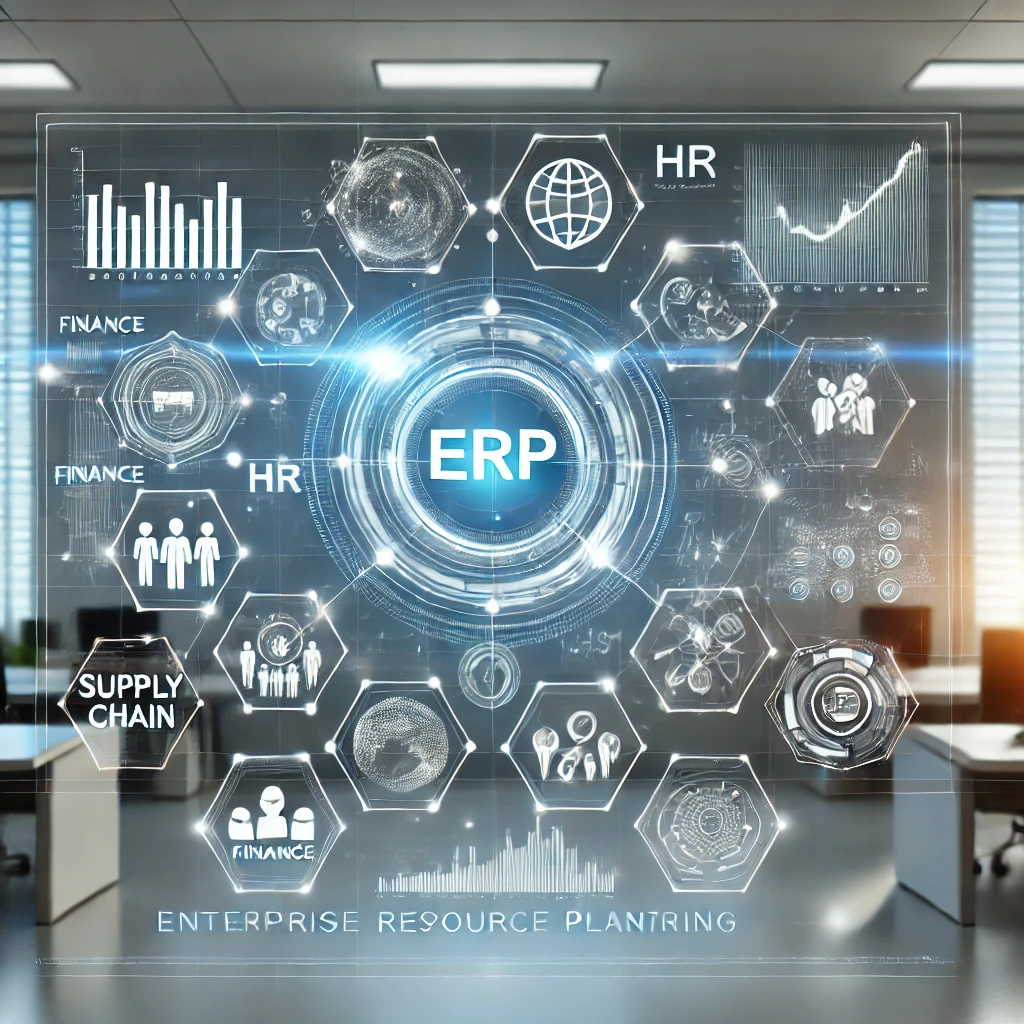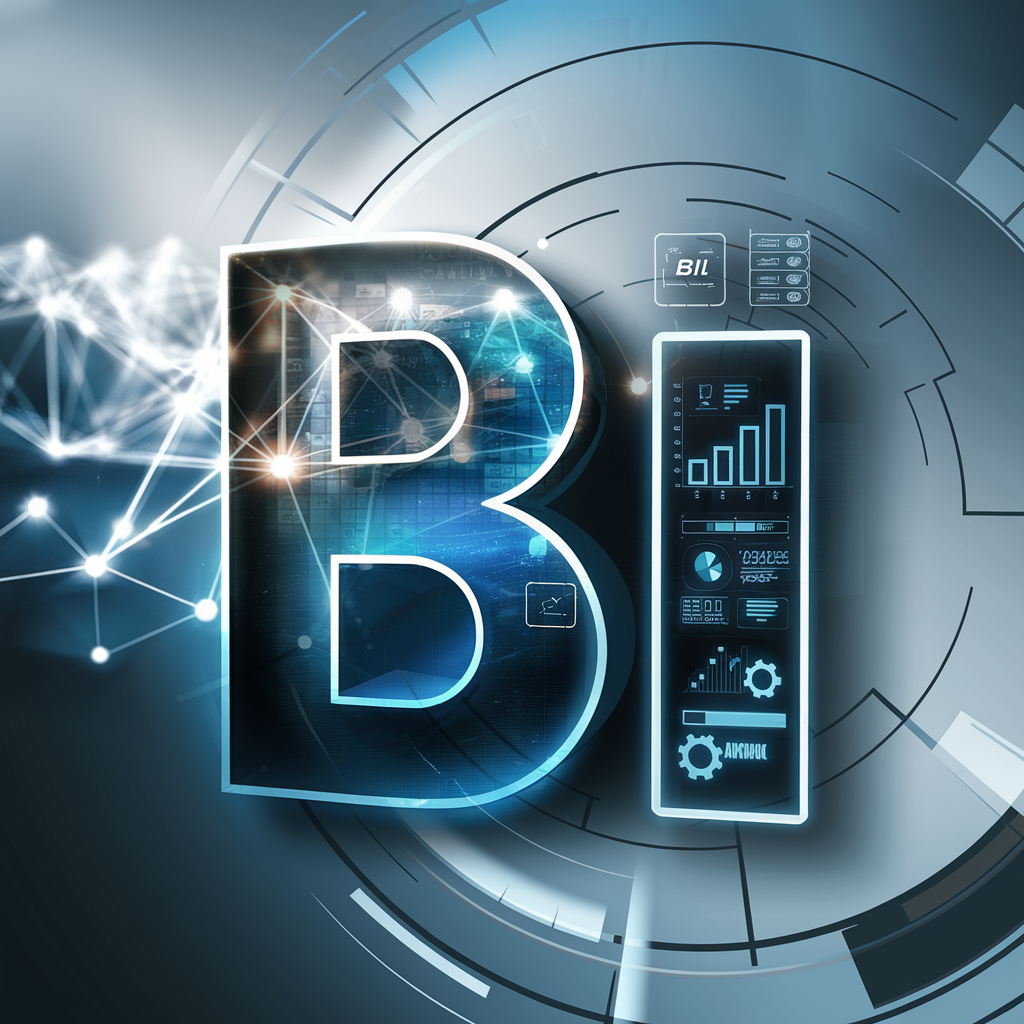“Stop Losing Customers: Use CRM to Build Stronger Relationships”

Ever feel like you’re pouring money into marketing and still losing customers out the back door? You’re not alone.
Most businesses spend the majority of their budget trying to acquire new customers, forgetting that the real gold lies in keeping the ones they already have.
That’s where CRM—Customer Relationship Management—comes into play. Think of it as the secret weapon behind thriving businesses. It’s not just a tool or software; it’s a strategy.
A well-implemented CRM system helps businesses understand, connect with, and serve their customers better.
Whether you’re running a small business or a large enterprise, CRM can be the glue that holds your customer relationships together.
Today’s customers expect more. They want personalized experiences, fast responses, and a sense that their favorite brands get them.
CRM helps you deliver on those expectations consistently. This article will show you why CRM is no longer optional and how businesses that ignore it risk bleeding revenue.
Ready to stop the churn and start building unbreakable relationships? Let’s get started.
Understanding CRM (Customer Relationship Management)
What Is CRM?
CRM stands for Customer Relationship Management, but it’s more than just a fancy database. At its core, CRM is a holistic approach to managing a company’s interaction with current and potential customers.
It combines technology, strategy, and data to improve customer service, drive sales, and enhance customer retention.
Most people think of CRM as a piece of software—and while that’s partly true—it’s a business philosophy. It’s about putting the customer at the center of everything you do.
CRM software helps companies track customer interactions, manage leads, automate communication, and generate reports. The goal? To foster a relationship that keeps the customer coming back for more.
From tracking an email conversation to analyzing purchasing patterns, CRM systems give businesses a 360-degree view of the customer journey. This insight allows businesses to be proactive rather than reactive. And in today’s hyper-competitive marketplace, that edge is invaluable.
Evolution of CRM Technology
CRM hasn’t always been this slick. In the past, businesses managed customer information using spreadsheets and filing cabinets. It was messy, time-consuming, and prone to error. As businesses grew, so did the need for more efficient systems.
The first CRM software in the 1980s was clunky and expensive—think on-premise servers and endless manual data entry. Fast forward to today, and CRM systems have gone cloud-based, mobile-friendly, and AI-powered.
The evolution of CRM isn’t just about better software—it’s about smarter strategy. With advancements in artificial intelligence, machine learning, and automation, CRM tools can now predict customer behavior, recommend next steps, and even personalize messages based on browsing history or buying habits.
Businesses that adapt to these advancements are winning big. They’re turning every interaction into an opportunity and every data point into a competitive advantage.
Key Components of a Modern CRM System
What makes a CRM system truly powerful? It’s all in the features. Here’s a breakdown of what modern CRM software typically includes:
- Contact Management: Centralized storage for customer data, including names, emails, phone numbers, social media profiles, and more.
- Lead Management: Track prospects through every stage of the sales funnel.
- Sales Automation: Automate repetitive tasks like follow-up emails, meeting scheduling, and quote generation.
- Marketing Automation: Segment audiences, trigger email campaigns, and track engagement metrics.
- Customer Service Tools: Built-in help desk, ticketing systems, live chat, and chatbot integration.
- Analytics and Reporting: Visual dashboards that help you measure performance and forecast future sales.
- Mobile Access: Apps and mobile-optimized platforms so teams can access data on the go.
- Third-Party Integrations: Seamlessly connects with email platforms, e-commerce systems, and social media.
Having all these tools under one roof allows businesses to operate more efficiently, reduce response times, and deliver consistent customer experiences.
Why Customer Retention Is More Profitable Than Acquisition
Cost Comparison Between Retention and Acquisition
You’ve probably heard the stat: It costs five times more to acquire a new customer than to keep an existing one.
While the exact number can vary by industry, the message is clear—retention is cheaper and often more effective.
When you focus on customer retention, you’re essentially maximizing the return on your initial acquisition investment. It’s like getting the most out of every dollar spent.
Think about it—your existing customers already know your brand, trust your service, and are more likely to buy again. All you have to do is keep them happy.
On the other hand, acquiring a new customer requires targeted ads, promotions, sales pitches, and onboarding. That’s a lot of effort (and money) for a maybe. And even then, there’s no guarantee they’ll stick around.
Smart businesses understand this. That’s why they’re shifting their budgets toward retention strategies like CRM implementation, loyalty programs, and customer satisfaction initiatives.
Why Customer Retention Is More Profitable Than Acquisition
Impact of Repeat Customers on Revenue
Repeat customers aren’t just loyal—they’re lucrative. Studies show that returning customers spend up to 67% more than new ones.
Why? Because they already trust your brand, understand your products, and don’t need to be convinced of your value. They buy more often, spend more per purchase, and are more likely to try new products.
Let’s break it down:
- Higher conversion rates: Existing customers are more likely to buy again because you’ve already built credibility with them.
- Lower marketing costs: You don’t have to spend as much to reach or persuade them.
- Increased lifetime value (CLV): The longer they stay with you, the more valuable they become.
Businesses with strong CRM systems can easily identify these high-value customers and tailor experiences to keep them engaged. Whether through loyalty rewards, personalized offers, or proactive service, CRM empowers businesses to strengthen these relationships.
And here’s the cherry on top: loyal customers often turn into brand advocates. They recommend you to their friends, leave positive reviews, and boost your reputation—all for free. CRM helps track this advocacy and reward it, further encouraging customer-led growth.
Real-World Statistics That Prove Retention Works
Still not convinced? Here are some eye-opening stats that highlight the power of retention:
- Increasing customer retention rates by 5% increases profits by 25% to 95% (Harvard Business Review).
- A loyal customer is worth up to 10x as much as their first purchase (White House Office of Consumer Affairs).
- Companies that prioritize customer experience achieve 60% higher profits than their competitors (Forbes).
These aren’t just numbers—they’re proof that investing in customer relationships pays off. CRM platforms make it easier than ever to implement, measure, and optimize your retention strategy. And the results speak for themselves.
If your business isn’t prioritizing retention, you’re leaving serious money on the table. CRM isn’t just helpful—it’s essential.
How CRM Builds Stronger Relationships
Centralized Customer Data
Imagine having every detail about your customer—purchase history, support tickets, emails, social media interactions—all in one place. That’s the magic of centralized data, and it’s one of the biggest perks of using CRM.
When customer information is fragmented across departments or platforms, it’s easy for things to fall through the cracks. But when it’s centralized, everyone on your team—from sales to support—has access to the full picture. That means:
- Faster service because reps aren’t wasting time digging for data.
- Smarter decisions based on complete customer histories.
- Personalized experiences that feel authentic and thoughtful.
Think about it like this: Wouldn’t you feel more valued if a company remembered your last purchase, your preferences, or even your birthday? That’s the kind of experience a CRM can help deliver consistently.
With centralized data, businesses can also spot trends. Maybe a customer is buying less frequently or has submitted several support tickets. CRM systems can flag these behaviors, allowing your team to step in before the relationship sours.
Bottom line? Centralized data equals smarter, faster, and more human customer interactions. And in today’s experience-driven market, that’s a game changer.
Personalized Communication
One-size-fits-all messaging is dead. Today’s consumers expect tailored communication—and they can spot generic messages a mile away. CRM gives you the tools to send the right message to the right person at the right time.
Here’s how it works:
- Segmentation: Divide your audience based on demographics, behavior, purchase history, or engagement level.
- Targeted messaging: Send customized emails or offers based on what you know about each segment.
- Dynamic content: Personalize subject lines, product recommendations, or even landing pages to match individual preferences.
Let’s say a customer recently bought a coffee machine. With CRM, you can automatically send them an email a week later offering accessories or cleaning products. Or maybe a customer hasn’t shopped in 60 days—you can trigger a “We miss you” message with a discount to bring them back.
This level of personalization builds trust. It shows your customers that you’re paying attention—and that you care. And that kind of connection leads to loyalty.
Plus, personalized communication gets results. Open rates, click-through rates, and conversion rates all spike when your messages are relevant and timely. With CRM, this kind of targeting isn’t just possible—it’s effortless.
Improved Customer Support and Service
Let’s be honest—nobody likes waiting on hold or repeating their issue to multiple reps. With CRM, you can deliver support that’s fast, seamless, and actually helpful.
CRM platforms allow support teams to:
- See full customer histories at a glance
- Assign and escalate tickets efficiently
- Automate follow-ups and feedback requests
- Track common issues to spot patterns and improve service
The result? Less frustration, faster resolution, and happier customers.
And happier customers mean better retention.
96% of customers say customer service is a key factor in their loyalty to a brand. With CRM, you can turn your service team from a cost center into a growth engine.
Even better, modern CRMs often include live chat, chatbots, and AI assistants to help customers 24/7. That means you’re never leaving a question unanswered or a concern unaddressed.
Support isn’t just about solving problems—it’s about strengthening relationships. CRM helps you do both, and that’s what builds customer loyalty that lasts.
Features That Make CRM a Must-Have for Every Business
Sales Pipeline Management
Managing your sales process can be chaotic—especially when leads are scattered, follow-ups get forgotten, and no one knows what stage a prospect is in. CRM brings order to that chaos. With robust sales pipeline management tools, CRM platforms give your sales team a clear, visual overview of where every lead stands and what actions are needed next.
Here’s why this matters:
- Track every deal from lead to close: Whether it’s a first-time inquiry or a final negotiation, CRM systems let you manage every step of the journey.
- Identify bottlenecks: Maybe leads are getting stuck in the proposal stage, or maybe follow-ups are slipping through the cracks. With CRM, you can spot these issues and fix them fast.
- Assign tasks and reminders: Sales reps can set up automatic reminders for calls, emails, or demos, ensuring no opportunity gets lost in the shuffle.
- Forecast revenue: With real-time pipeline visibility, managers can accurately predict future revenue based on deal values and close probabilities.
And let’s not forget the biggest win—efficiency. Sales reps spend less time on admin and more time selling. According to Salesforce, CRM can improve sales productivity by up to 34%.
With a well-organized sales pipeline, your team is always one step ahead. Prospects feel valued, follow-ups are timely, and deals move forward smoothly. That’s how you turn interest into income.
Automation of Marketing Campaigns
Marketing is a full-time job. From email campaigns to social media posts to event reminders—it’s easy to get overwhelmed. But with CRM, marketing becomes smarter and more automated. That means less manual work and more strategic engagement.
CRM platforms come equipped with powerful marketing automation features, such as:
- Email campaign automation: Send welcome emails, nurture sequences, or re-engagement messages without lifting a finger.
- Behavior-based triggers: Automatically send messages when a customer clicks a link, visits a product page, or abandons their cart.
- Lead scoring: Identify which leads are most likely to convert based on their activity and engagement.
- Analytics and A/B testing: See what works, what doesn’t, and how to improve future campaigns.
Let’s say someone downloads a free guide from your website. Your CRM can immediately add them to a drip campaign that delivers helpful content over time, building trust until they’re ready to buy. No spreadsheets, no manual emails—just set it and let the system do the work.
Automated marketing isn’t just convenient—it’s more effective. Studies show that businesses using marketing automation see 451% more qualified leads. With CRM, you’re not just reaching people—you’re reaching them with the right message at the perfect moment.
Customer Feedback Tracking
Want to know how your customers feel? Ask them—and then track the answers. CRM systems make it easy to collect, store, and analyze customer feedback so you can keep improving.
Here’s how smart businesses use CRM to turn feedback into fuel for growth:
- Surveys and forms: Send automated satisfaction surveys after a purchase, support interaction, or service experience.
- Feedback tagging: Organize comments by category—product, delivery, service, pricing—to spot trends fast.
- Customer sentiment analysis: Some CRMs use AI to gauge emotional tone in feedback, helping you identify frustrated or unhappy customers before they churn.
- Close-the-loop workflows: Trigger internal tasks when negative feedback is received, ensuring a follow-up to resolve the issue.
Let’s be real—no product or service is perfect. But customers don’t expect perfection; they expect you to listen, care, and respond. CRM helps you do all three.
And here’s a pro tip: Positive feedback is just as valuable. Use it to identify your strongest offerings, highlight testimonials, and reinforce what’s working. The more you know about how customers experience your brand, the better you can serve them.
Feedback is a gift, and CRM makes sure you never waste it.
How CRM Enhances Team Collaboration and Productivity
Breaking Down Departmental Silos
One of the biggest challenges in growing businesses is the communication gap between departments. Sales might not know what marketing is up to, and support may have no clue about recent product updates. These silos lead to miscommunication, duplicated efforts, and a disjointed customer experience.
CRM solves this by creating a single source of truth for all teams. Everyone—whether they’re in sales, marketing, support, or leadership—can access the same customer records, notes, and activity logs. This ensures:
- Real-time visibility into customer interactions
- Better coordination across departments
- More consistent and aligned messaging
- Faster issue resolution
Think about a customer who’s just received a promotional offer. If they call in with a question, the support team should know about that promo. Or imagine marketing is launching a campaign—sales should be prepped with talking points and expectations.
CRM keeps everyone on the same page, which translates to a smoother, more cohesive customer journey.
Task Automation and Time Management
CRM isn’t just about customer relationships—it’s a major time-saver for your internal team. With built-in automation, CRM handles the repetitive tasks so your people can focus on what matters.
Here’s what gets streamlined:
- Automated follow-ups after meetings or calls
- Instant task creation when a lead is added or updated
- Meeting scheduling with email and calendar integration
- Reminders and alerts to prevent missed deadlines
By eliminating manual work, CRM frees up your team to be more strategic and proactive. That means less burnout, better performance, and higher job satisfaction.
Plus, CRM helps you prioritize. With task boards and pipeline views, team members can easily see what’s urgent, what’s pending, and what’s been completed. It’s like having a personal assistant for every member of your team—keeping them organized, on track, and focused on results.
Using CRM to Personalize Customer Experiences
1. Segmenting Your Audience for Targeted Outreach
Not all customers are created equal—and treating them like they are is a missed opportunity. CRM allows you to segment your audience based on behavior, demographics, purchase history, location, and more.
Here’s what segmentation can do:
- Identify VIP customers who deserve exclusive offers or priority service
- Target dormant customers with win-back campaigns
- Send hyper-relevant emails based on product interest or browsing behavior
For example, you could create a segment of customers who haven’t purchased in 90 days and send them a special discount. Or you could identify customers who regularly buy one product and cross-sell a complementary item.
Segmentation makes your outreach smarter and more effective. It’s how businesses go from blasting emails to delivering meaningful, timely messages that customers care about.
2. Delivering Omnichannel Experiences
Customers interact with businesses across multiple touchpoints—website, email, social media, chat, and phone. CRM helps you connect all those dots so you can deliver a seamless experience, no matter where the customer is.
With an omnichannel CRM strategy, you can:
- Track interactions across all channels
- Respond from a unified inbox
- Trigger automated workflows based on activity
- Ensure messaging stays consistent
Imagine a customer starts a conversation via Facebook Messenger, follows up with an email, and then calls support. With CRM, every interaction is logged, so the next rep knows exactly what’s going on—no need for the customer to repeat themselves.
This kind of connected experience builds trust and loyalty. It makes customers feel like they’re dealing with a brand that remembers them—not a faceless system.
And in a world where customer expectations are sky-high, that matters more than ever.
Boosting Customer Loyalty with CRM
Implementing Loyalty Programs Through CRM
Loyalty programs work—but only when they’re well-executed. CRM gives you the tools to run, track, and optimize loyalty programs that increase retention.
Here’s how it works:
- Track points and rewards for purchases, referrals, and engagement
- Automate reward notifications via email or SMS
- Segment loyal customers for VIP perks or early access to new products
- Measure the ROI of your loyalty initiatives
Whether you’re offering discounts, freebies, or exclusive experiences, CRM helps you manage it all in one place. Plus, it gives you insight into which rewards your customers love—and which ones fall flat.
This data-driven approach ensures your loyalty program stays relevant, effective, and appreciated. And that leads to stronger bonds and repeat business.
Using CRM Data to Surprise and Delight Customers
Sometimes, the little things make the biggest impact. A birthday email with a special offer. A thank-you note after a big purchase. A personalized recommendation based on browsing habits. These are the touches that make customers feel valued—and CRM makes them easy.
By leveraging customer data, you can:
- Send milestone rewards on anniversaries or birthdays
- Tailor offers to specific preferences
- Follow up after purchases to check satisfaction
These moments may seem small, but they create emotional connections that lead to long-term loyalty. Customers don’t just remember how good your product is—they remember how you made them feel.
CRM gives you the tools to create those moments at scale. And when done right, it turns ordinary transactions into unforgettable experiences.
Conclusion
If you’re tired of losing customers, it’s time to rethink your strategy. CRM isn’t just software—it’s a mindset shift. It’s about putting relationships first, personalizing every touchpoint, and building trust that keeps customers coming back for more.
Smart businesses know this. They don’t just use CRM to manage data—they use it to create experiences, foster loyalty, and drive growth. From automating tasks to delivering personalized service, CRM helps you become the kind of business people love to support.
So, what are you waiting for? Start treating your customers like individuals—not just numbers. With the right CRM in place, you can stop the churn and start building relationships that last a lifetime.
FAQs
1. What is the main purpose of a CRM system?
A CRM system helps businesses manage customer interactions, streamline processes, and improve relationships with customers to increase retention and sales.
2. How does CRM improve customer service?
CRM provides a centralized database of customer interactions, allowing support teams to access complete histories and resolve issues faster and more efficiently.
3. Can small businesses benefit from using CRM?
Absolutely. CRM tools are scalable, and many offer affordable solutions for small businesses looking to enhance customer relationships and streamline sales.
4. What’s the difference between CRM and marketing automation?
CRM focuses on managing customer relationships and data, while marketing automation handles the execution and tracking of marketing campaigns. Most modern CRM systems combine both.
5. How do I choose the right CRM for my business?
Consider your business size, budget, and specific needs. Look for features like contact management, automation, integration options, and user-friendly interfaces



